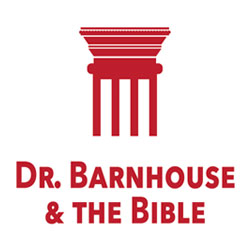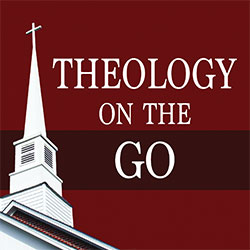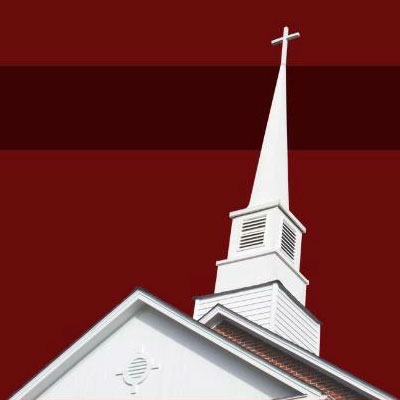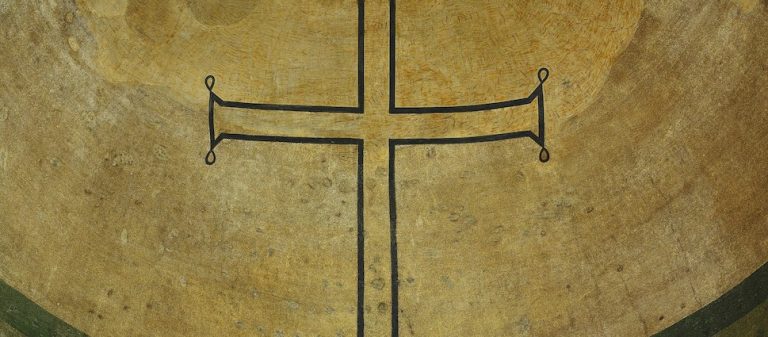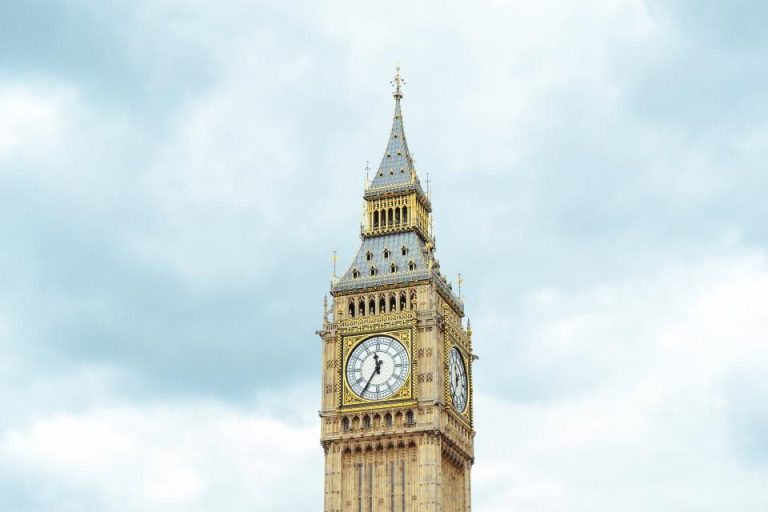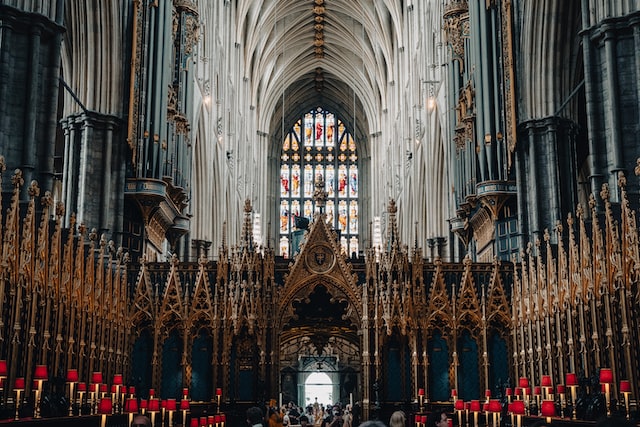
Via Media: Factual or Fanciful?
It has long been popular to characterize Anglicanism as a distinctive middle way or via media between Protestantism and Roman Catholicism. Many today understand Anglicanism as a unique combination of the best features of the two traditions, which avoids the perceived errors of both Protestants and Catholics. Indeed, some view this via media as the definitive way to understand Anglicanism’s unique vocation as a religious tradition. Before he changed his mind and became a Roman Catholic, John Henry Newman argued that “the glory of the English Church is, that it has taken the VIA MEDIA, as it has been called. It lies between the (so called) Reformers and the Romanists.”[1]
This interpretation, so common among Anglican laity and clergy, is not shared by most academic historians, however. In the last thirty years, most scholars have come to reject the via media model for much of Anglican history, seeing it instead as a fanciful nineteenth-century construction, invented to serve primarily partisan purposes. Thomas Cranmer biographer Diarmaid MacCulloch dismisses this interpretation of Anglicanism as a middle way as “the myth of the English Reformation,” and most of his colleagues appear to agree.[2] Historian Patrick McGrath argues, for example, that the only via media in the sixteenth-century Church of England was one “between different forms of Protestantism.”[3]
Clearly, the conception of the Church of England as a half-way point between Rome and John Calvin’s Geneva (or Martin Luther’s Wittenberg) would have been incomprehensible to the English Reformers of the sixteenth century. Historians readily concede that the English Reformation was a conservative affair in some respects, including in its retention of an episcopal polity and its preservation of many liturgical forms. The Elizabethan religious settlement did seek to construct an inclusive national church. Nevertheless, it also established a church whose doctrinal identity was unambiguously Protestant. The chief architect of the English Reformation—Archbishop Thomas Cranmer—was, after all, martyred for explicitly rejecting Roman Catholic eucharistic theology (as were his colleagues Nicholas Ridley and Hugh Latimer). Most of the leading clergy under Elizabeth I spent time in exile on the Continent to avoid a fate similar to that of the Oxford Martyrs under Queen Mary. After 1558, the Church of England was broadly Protestant both liturgically and confessionally. It is revealing that when Elizabeth succeeded Mary in 1558, the state chose to enforce use of Cranmer’s second, more thoroughly Reformed Book of Common Prayer of 1552 with minor edits, rather than the first edition of 1549. Meanwhile, the Articles of Religion, adopted by convocation in 1571, have often been described as reflecting a Reformed position with some Lutheran elements. Although clergy were required to subscribe to the Articles, the church’s hierarchy was concerned that parochial clergy be thoroughly catechized in the Reformed faith. Accordingly, in 1586, Archbishop John Whitgift stipulated that all lower clergy in his province read and be tested on a collection of sermons by the Zurich Reformer Heinrich Bullinger called the Decades. English churchmen of all sorts saw themselves as members of one of several national Protestant churches in Europe, not as part of some unique third way. As MacCulloch has observed, King James I may have coined the word ‘Anglican’ in 1598 but, significantly, the term was not in general use until the nineteenth century.[4]
This broadly Reformed consensus continued into the seventeenth century. Even those critics of the Puritans, the Caroline Divines, do not fit the template into which later Anglo-Catholics sought to force them. Though some moved in the direction of Arminianism, few had serious qualms about calling themselves Protestants. For instance, Bishop John Cosin (1594-1672) wrote appreciatively about the Reformation and understood the English Church to be in communion with the Continental Reformed churches. “In heart and affection we enjoy constant union with all other Churches on the earth… We desire this to be particularly understood [here] as referring to the Protestant Churches.”[5] For his part, the much-revered Bishop Jeremy Taylor (1613-1667) wrote to a convert to Catholicism that her new beliefs were “not safe at all, but extremely dangerous; we affirm those errors in themselves to be damnable, some to contain in them Impiety, some to have Sacriledge [sic], some Idolatry, some Superstition.”[6] Nor could England’s coronation oath of this period be much clearer about the state church’s identity. For instance, the version of the oath in the Coronation Oath Act of 1688 asks the monarch (who serves as the Supreme Governor of the Church of England) to answer three questions, including: “Will You to the utmost of Your power Maintaine the Laws of God the true Profession of the Gospell and the Protestant Reformed Religion Established by Law?”[7]
Although eighteenth-century High Churchmen are often mistakenly portrayed as forerunners of the later, more Catholic Oxford Movement, most understood themselves as deeply committed to the Protestant character of the established church. Although they were critical of what they construed as the emotionalism of their evangelical brethren, the old High Churchmen understood the Church of England to be Protestant in doctrine and opposed to Roman Catholic errors, which they held to be consequential. Accordingly, the decision of American Anglicans (including High Churchmen such as Samuel Seabury) to assume the name of the Protestant Episcopal Church in the wake of achieving independence should come as little surprise.
In short, it is essential to recognize that the notion of the via media that emerged during the mid-nineteenth century represented a substantial departure from mainstream Anglican views accepted for roughly three hundred years. John Keble—whose Assize Sermon (1833) is usually understood to represent the opening salvo of the Oxford Movement—claimed to have discovered a via media theology in the writings of Richard Hooker (1554-1600). As editor of Hooker’s works, Keble was well positioned to recast Hooker as not just a critic of some aspects of Puritanism, but as the architect of classic Anglican theology—a theology that had supposedly moved away from the sixteenth-century Reformers. Hooker scholar Nigel Atkinson explains:
“The via media doctrine then is that which is said to isolate both Hooker and the Church of England from the Reformation’s first principles and this, it is inferred, is what is so unique about Hooker and the Anglicanism that he first espoused… Hooker’s standing as the first ‘Anglican’ theologian has been… taken for granted [by some] that as an Anglican theologian Hooker was pursuing a unique doctrinal approach that marks the Church of England as doctrinally distinct from Catholicism or Protestantism.”[8]
And yet, as Atkinson, Torrance Kirby, and Brad Littlejohn (among others) have demonstrated conclusively in recent years, Hooker was very much working within the larger Reformed circle of theological discourse.[9] Most significantly, Hooker’s understanding of justification—the doctrine Hooker believed as “that grand question, which hangeth yet in controversy between us and the Church of Rome”— was in-line with that of the Magisterial Reformers. As Hooker concluded, “the Church of Rome, in teaching justification by inherent [infused] grace [as opposed to an external imputed righteousness], doth pervert the truth of Christ, and that by the hands of his Apostles we have received otherwise than she teacheth.”[10]
While he did much to popularize the novel conception, John Henry Newman eventually came to recognize that the via media he once touted represented wishful thinking, a fabrication that actually had little foundation in the historical record. “The via media,” he concluded in his Apologia Pro Vita Sua (1864), “has never existed except on paper… [it] was an impossible idea; it was what I had called ‘standing on one leg’; and it was necessary… to go further either one way or another.”[11] Yet those who remained Anglicans held onto the via media ideal. Indeed, as the Oxford Movement’s disciples went on to form the Anglo-Catholic party by the end of the nineteenth century, the ideal became widely accepted.
Why has this notion’s influence been so pervasive and long-lasting, especially when most careful students of Anglican history have long dismissed it as an apparition? As MacCulloch has shown, being rooted in academe, the Oxford Movement was ideally situated to write its own history and influence the church’s upper echelons. Further, when the second generation sought to apply the Movement’s teachings to clerical vesture, ceremonial, and liturgy, they managed to effect a virtual revolution in Anglican worship throughout the global communion. Medieval practices that had been carefully expunged by the English Reformers were gradually re-introduced into much of Anglican worship, and in many dioceses even became the norm. In other words, Anglicanism soon no longer looked very Protestant.
This transformation was particularly complete in the American church for a couple reasons. For one, under the influence of revivalism, other Protestants who had previously possessed a modest liturgical tradition (such as the Presbyterians and Methodists) mostly discarded it. English-speaking Protestantism thus became closely identified with extemporaneous public prayer and less formal worship. Second, the virtual disappearance of the fiercely Protestant evangelical party within the Episcopal Church by the early twentieth century meant that the staunchest defenders of the Protestant character of Anglicanism were long gone. By the mid-twentieth century, few living Episcopalians could remember what traditional Anglican worship looked like. Indeed, Anglo-Catholics came to refer to their romanticized ritualism (often drawn from mid-nineteenth-century French Catholic practices) with unintended irony as “traditional Anglican worship.”
My analysis above should not be construed as arguing that denominational traditions can’t or shouldn’t evolve over time, or that the Oxford Movement didn’t make any positive contributions to the life of the church. It is crucial, however, that we correctly understand Anglicanism’s past—especially today, during this time of global realignment. Clergy and laity alike could benefit from the expertise of contemporary church historians. The latest historical scholarship can help us transcend the old fanciful interpretations and draw a more accurate portrait of the Anglican church in its formative period and well beyond.
Gillis Harp serves as Professor and Chair of History at Grove City College. Harp is the author, most recently, of Protestants and American Conservatism: A Short History (Oxford University Press, 2019). He and his wife, Barbara, worship at Grace Anglican Church (ACNA) in Grove City, PA. They are the parents of three grown daughters.
Related Links
“The Thirty-Nine Articles,” a series by Henry Jansma
“George Herbert – Pastor and Poet” by Simonetta Carr
“Six Benefits of Studying Church History” by William Boekestein
“Justification: The Roman Catholic View” by Amy Mantravadi
Histories and Fallacies: Problems Faced in the Writing of History by Carl Trueman
Notes
[1] J. H. Newman, VIA MEDIA No. I Tracts for the Times [Number 38] https://anglicanhistory.org/tracts/tract38.html Newman’s disdain for the Reformation is implied here in his reference to “the (so called) Reformers.”
[2] Diarmaid MacCulloch, “The Myth of the English Reformation,” Journal of British Studies 30 (1991): 1-19
[3] McGrath quoted by Dewey D. Wallace, Jr., “Via Media? A Paradigm Shift,” Anglican and Episcopal History 76 (2003), 15. For another helpful overview of the historiography, see: historiography of the English Reformation, see N. Tyacke, “Re-thinking the ‘English Reformation’”, in Tyacke (ed.), England’s long Reformation 1500-1800 (London, 1998), 1-32
[4] Diarmaid MacCulloch,”The Latitude of the Church of England,” in K. Fincham and P. Lake, eds., Religious Politics in Post-Reformation England: Essays in Honour of Nicholas Tyacke (Woodbridge, UK, 2006), p.??
[5] F. Meyrick, Old Anglicanism and Modern Ritualism (London, 1901), 105; David B. McIlhiney, “The Protestantism of the Caroline Divines,” Historical Magazine of the Protestant Episcopal Church 44 (1977): 143-154.
[6] A Letter Written to a Gentlewoman Newly Seduced to the Church of Rome by the Reverend Jeremy Taylor D.D.(London: Printed for L. Meredith, 1687).
[7] Graeme Watt, “The Coronation Oath,” Ecclesiastical Law Journal, 19 (2017), 325.
[8] Nigel Atkinson, “Hooker’s Theological Method and Modern Anglicanism,” Churchman 114 (2000), 44.
[9] See, among others: W. J. Torrance Kirby, Richard Hooker: Reformer and Platonist (Aldershot, UK, 2005) and Richard Hooker and the English Reformation (Dordrecht, 2003); W. Bradford Littlejohn, The Peril and Promise of Christian Liberty: Richard Hooker, the Puritans, and Protestant Political Theology (Grand Rapids, 2017)
[10] Richard Hooker, A Learned Discourse of Justification, Works, and How the Foundation of Faith is Overthrown(1612) https://www.ccel.org/ccel/hooker/just.ii.html
[11] J. H. Newman, Apologia Pro Vita Sua (London, 1864) https://www.newmanreader.org/works/apologia65/chapter4-1.html


